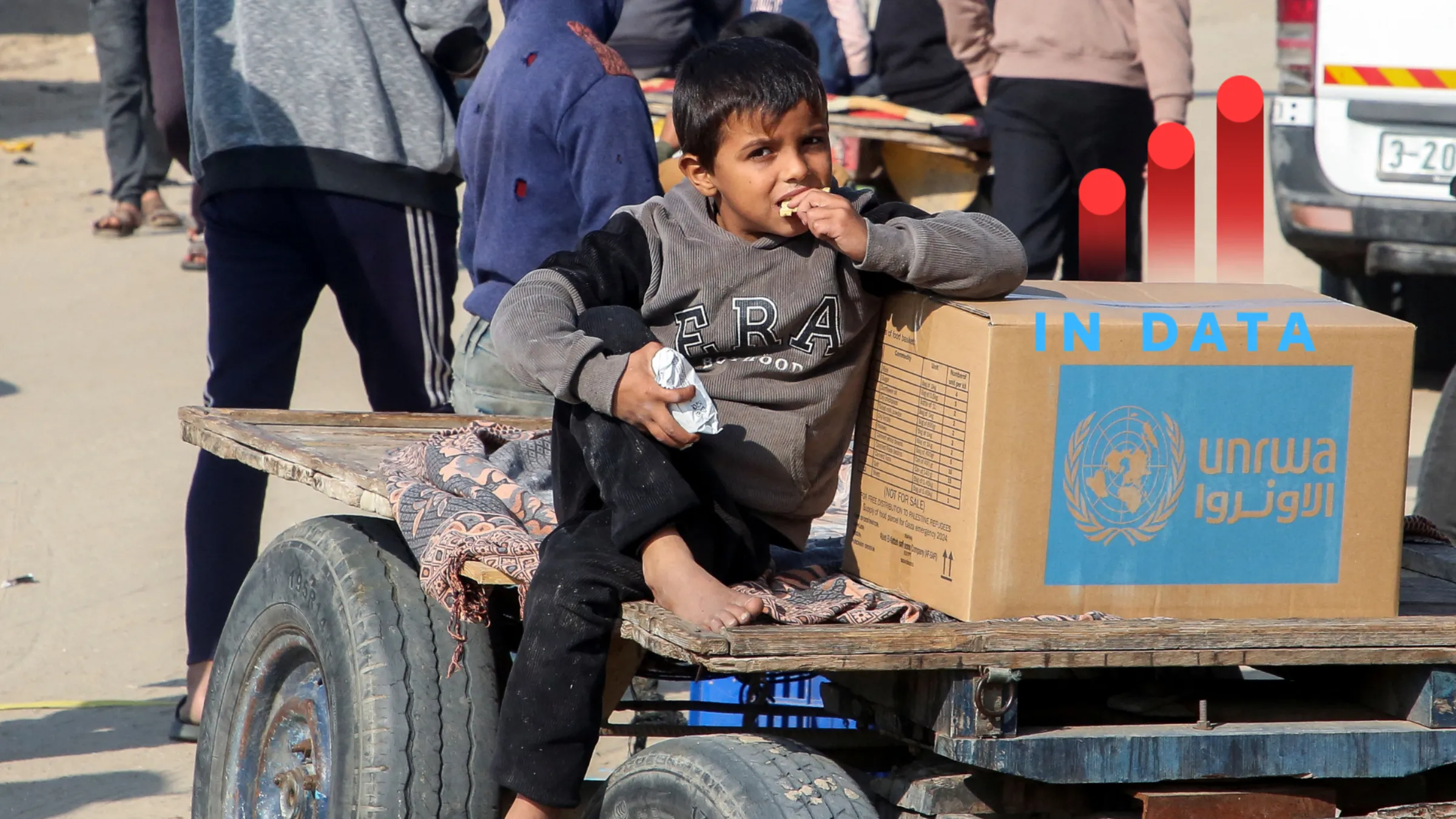Context is powered by the Thomson Reuters Foundation Newsroom.
Our Standards: Thomson Reuters Trust Principles

A Palestinian boy sits beside an aid box provided by UNRWA outside a distribution point, amid a ceasefire between Israel and Hamas, in Khan Younis in the southern Gaza Strip, February 4, 2025. REUTERS/Hatem Khaled
Contributions topped $212 billion in 2024, but are set to plummet as Trump takes an axe to the U.S. aid budget.
LONDON - International aid fell in 2024 for the first time in six years, and is set to plunge further this year after U.S. President Donald Trump imposed a sweeping freeze on foreign aid, and many other key donors announced cuts.
The world's major donors contributed $212.1 billion in 2024, down 7.1% in real terms compared to 2023, according to preliminary data collected by the Organisation for Economic Co-operation and Development (OECD).
The data measures the so-called Official Development Assistance (ODA) provided by the 33 members of the OECD's Development Assistance Committee (DAC).
OECD officials warned that aid could plummet by between 9% and 17% in 2025 - the latter figure would represent the biggest drop in global aid on record.
Aid experts have said the cuts will put millions of lives at risk.
Carsten Staur, head of the DAC, said the downward trend in aid budgets was very worrying and the focus should be kept on the poorest, most fragile countries.
Staur called for funding to be ringfenced for sub-Saharan Africa - home to two-thirds of the world's 700 million people living in extreme poverty - after bilateral aid to the region fell 2% in real terms last year.
Aid agency Oxfam said governments should start taxing the super-rich to help reverse the cutbacks.
Last year's fall in aid was partly due to lower contributions to international organisations, decreased aid for Ukraine and reduced humanitarian assistance.
Bilateral aid to Ukraine totalled $15.5 billion, down 16.7% in real terms on 2023.
The amount of aid spent by donors on hosting refugees and asylum seekers in their own countries, which can be classed as overseas aid for a limited time under OECD rules, also fell.
The U.S. was the biggest aid donor overall last year contributing $63.3 billion, nearly a third of the total, according to the OECD data.
But Trump has gutted the U.S. Agency for International Development (USAID) this year, declaring it out of step with his "America First" agenda.
While the U.S. has long given the most in absolute terms, it is not the most generous, contributing far less in proportion to its wealth than many other countries.
The U.S. spent 0.22% of its Gross National Income (GNI) on aid last year, putting it way down the league table - and well below the 0.7% target set by the United Nations.
Only four countries exceeded the U.N. target last year - Denmark, Luxembourg, Norway and Sweden.
The average aid spending by DAC countries was 3.3% of GNI.
OECD officials said support from donors was weakening as they grappled with post-COVID budget pressures, demands for greater defence spending - especially in Europe - and the burden of ageing populations.
Two thirds of DAC countries reduced aid last year.
While Trump's aid cuts have grabbed headlines, other significant donors like Germany, Britain, France and the Netherlands have also announced they will scale back in the coming years.
Britain surprised humanitarian charities in February when the government announced it was cutting its aid budget from 0.5% of GNI to 0.3% in 2027 to boost defence spending.
OECD officials said 12 countries had signalled they would reduce aid.
The cuts follow a run of significant aid increases between 2019 and 2023 as donors responded to the COVID-19 pandemic, Russia's invasion of Ukraine, multiple humanitarian crises, refugee flows and the threats of climate change.
The U.N. will bring countries together in June to shape the future of financing development aid at a major conference in Spain.
(Reporting by Emma Batha; Editing by Ana Nicolaci da Costa.)
Context is powered by the Thomson Reuters Foundation Newsroom.
Our Standards: Thomson Reuters Trust Principles